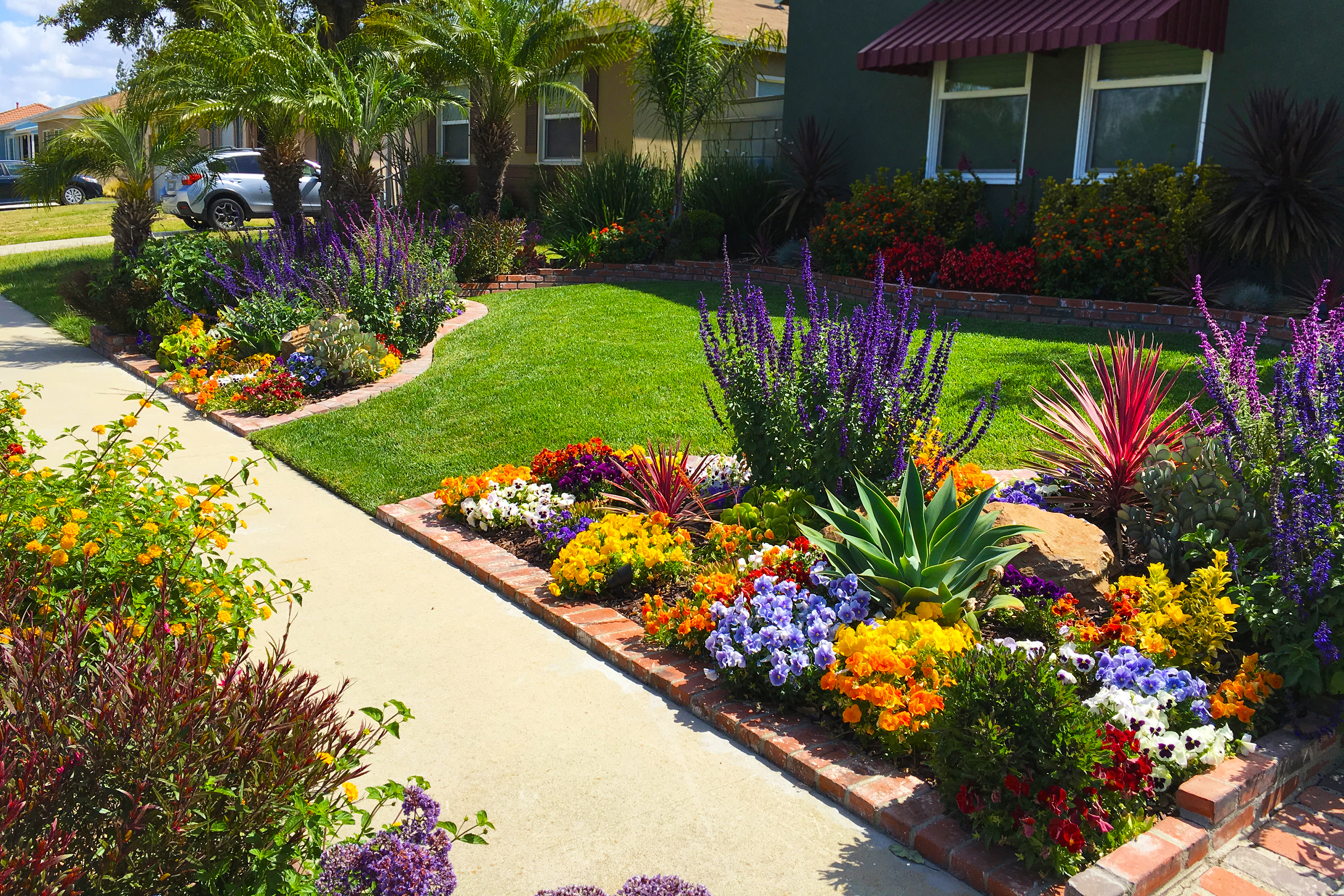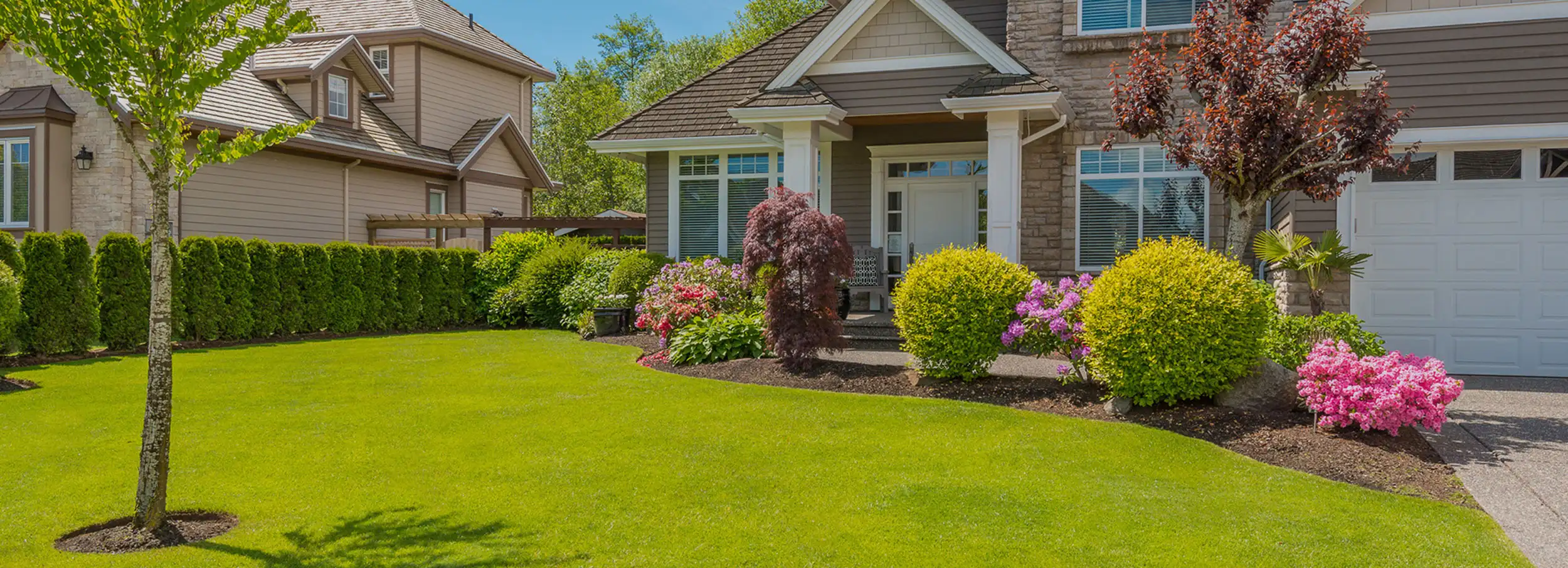Transform Your Outside Area with Specialist Palm Desert Landscaping Services
Transform Your Outside Area with Specialist Palm Desert Landscaping Services
Blog Article
A Comprehensive Guide to Designing and Implementing Effective Landscape Design Solutions
The art and science of landscaping expand beyond plain aesthetic appeals; they involve a thoughtful integration of layout principles, ecological stewardship, and useful execution. What techniques can one employ to make sure these landscapes not only grow but additionally flourish in consistency with their surroundings?

Recognizing Landscape Design Concepts
One might question what foundational elements contribute to efficient landscape style. At its core, successful landscape style pivots on a number of vital concepts that assist the arrangement and option of aspects within a room. These concepts include unity, equilibrium, rhythm, and percentage, each serving to develop an unified outside environment.
Unity describes the cohesive partnership among various parts, guaranteeing that they function with each other aesthetically and functionally. Equilibrium can be achieved via in proportion or unbalanced plans, allowing the landscape to feel secure and inviting. Percentage includes recognizing the scale of components in connection to each various other and the surrounding environment, advertising visual consistency and convenience.

Evaluating Your Outdoor Space
Prior to implementing the principles of landscape style, a detailed assessment of your outdoor room is important. This initial analysis assists specify the range of your landscaping task and guarantees that your design lines up with the distinct features of your building. Begin by examining the dimensions of your area, taking precise dimensions to understand the readily available area for numerous elements such as pathways, yards, and patios.
Next, observe the existing features of your landscape, consisting of topography, soil top quality, and drain patterns. These aspects significantly influence plant option and placement. Furthermore, analyze the sunlight direct exposure throughout different areas throughout the day, as this will certainly affect the sorts of plants that thrive in your yard.
Take into consideration the microclimates created by structures, trees, and various other obstacles, as they can impact temperature level and dampness levels. Take note of any type of existing plants or hardscape components that you desire to retain or eliminate. This comprehensive assessment lays the groundwork for a effective and knowledgeable landscape design solution, guaranteeing that your style is not just visually pleasing yet lasting and additionally practical for years ahead.
Sustainable Landscaping Techniques
These methods not only advertise eco-friendly balance but also boost the visual and practical value of a landscape. Executing efficient watering systems, such as drip watering, reduces water waste and ensures that plants obtain appropriate wetness (Palm Desert Landscaping).

An additional reliable strategy is the critical positioning of hedges and trees to supply all-natural windbreaks and shade, therefore lowering energy costs Read Full Report (Palm Desert Landscaping). Rain gardens can be integrated into the landscape design to manage stormwater runoff properly, filtering system toxins prior to they go into waterways
Choosing the Right Plant Kingdoms
Picking the right plants for your landscape is vital to attaining both aesthetic charm and environmental consistency. The process begins with an understanding of your neighborhood environment, dirt conditions, and the particular microenvironments within your landscape. Evaluating variables such as sunshine exposure, dampness levels, and existing plants will assist you pick plants that Home Page grow in your special setting.
Take into consideration incorporating indigenous plants, as they are well-adapted to neighborhood conditions, need less upkeep, and assistance local wildlife. In addition, choosing a varied array of species can improve biodiversity while lowering the risk of illness and parasite outbreaks. It is vital to evaluate the development behaviors, flowering periods, and seasonal shades of prospective plants to develop a dynamic and natural landscape.
Moreover, think of the intended use the area; as an example, if the area will certainly experience high foot web traffic, go with resistant ground covers. By thoughtfully picking plants that align with both your environmental demands and aesthetic objectives, you can develop a sustainable landscape that not just enhances your property but also contributes favorably to the surrounding community.

Execution and Upkeep Strategies
As soon as the right plants have been picked for your landscape, the emphasis shifts to effective implementation and ongoing upkeep approaches. Effective installment starts with correct website prep work, that includes soil screening to identify nutrient levels and pH, complied with by amending the dirt as needed. Thoroughly i thought about this organize plants according to their growth practices and light requirements, ensuring ample spacing to promote healthy and balanced growth.
Watering is a critical element of implementation. Establish a watering schedule that thinks about the particular requirements of each plant types, adjusting for seasonal adjustments. Utilizing drip irrigation systems can boost water efficiency and minimize drainage.
Maintenance techniques should be executed to ensure the durability and vigor of your landscape. Routine tasks consist of weeding, mulching, and pruning to control development and avoid condition. Fertilizing should be carried out based on dirt examinations, supplying the required nutrients without over-fertilizing.
Keeping track of for illness and insects is vital; early detection can stop considerable damages. Seasonal changes to upkeep regimens, such as preparing and winterizing perennials for spring development, will ensure that your landscape continues to be healthy and visually attractive year-round.
Conclusion
In final thought, effective landscaping services call for a comprehensive understanding of layout principles, careful analysis of outdoor areas, and the application of sustainable strategies. The option of suitable plant types plays an essential role in improving visual allure and ecological durability - Palm Desert Landscaping. Effective execution and ongoing upkeep additionally guarantee the longevity and vigor of landscapes. By integrating these elements, landscapes can be transformed into lovely, useful environments that promote biodiversity and contribute positively to neighborhood wellness.
One could wonder what fundamental components add to effective landscape design. At its core, effective landscape style pivots on a number of vital concepts that assist the plan and selection of elements within a space.Selecting the right plants for your landscape is crucial to accomplishing both visual appeal and eco-friendly harmony. It is important to evaluate the development behaviors, growing durations, and seasonal colors of potential plants to create a natural and vibrant landscape.
Once the right plants have been selected for your landscape, the focus changes to reliable execution and continuous maintenance strategies.
Report this page